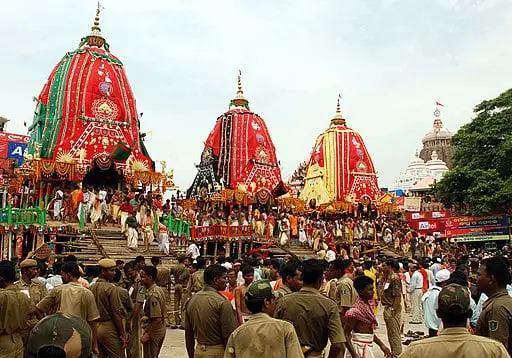Puri Rath Yatra: A Journey Through Time
India is a land of festivals, with each state and city celebrating its own unique rituals and customs. Among the grandest of these is the Puri Rath Yatra, a festival that takes place in the coastal town of Puri, in the eastern state of Odisha. This festival is a celebration of Lord Jagannath, the presiding deity of the famous Jagannath Temple in Puri. Thousands of devotees from across the country and abroad visit Puri during this festival every year. In this article, we will take a journey through time to explore the origins and evolution of the Puri Rath Yatra.
The Origins and Evolution of Puri Rath Yatra
According to legend, the first Rath Yatra was held during the reign of King Indradyumna, more than 5,000 years ago. The story goes that the king had a dream in which he saw Lord Jagannath, but nobody knew what he looked like. The king then sent his trusted minister, Vidyapati, in search of the Lord. Vidyapati eventually found Lord Jagannath in a forest in the form of three wooden idols, along with his siblings, Lord Balabhadra and Devi Subhadra.
The idols were brought to Puri and installed in the Jagannath Temple, which was built specifically to house them. The temple and the idols soon became famous, and people from all over the region came to worship Lord Jagannath. However, it was only during the reign of King Chodaganga Deva in the 11th century that the Rath Yatra as we know it today was officially established.
The king, a devotee of Lord Jagannath, wanted to make the deity more accessible to the people. He ordered the construction of three colossal chariots, one each for Lord Jagannath, Lord Balabhadra, and Devi Subhadra. The chariots were made of wood and were intricately carved and decorated. The first Rath Yatra took place in 1112 CE, and since then, it has been an annual event in Puri.
Over the centuries, the Rath Yatra has undergone several changes and has taken on different forms. For instance, during the Mughal era, the Rath Yatra had to be observed behind closed doors, as the Mughal rulers were not tolerant of public Hindu worship. However, the festival was still celebrated with great fervor, albeit in secrecy.
Another significant change came about during the colonial era when the British Raj attempted to ban the Rath Yatra. The colonial rulers saw the festival as a potential threat to their authority, as it brought together large crowds of people from different parts of the region. However, the ban only served to make the festival more popular, as people defied the order and continued to celebrate.
Today, the Puri Rath Yatra is one of the largest and most popular festivals in India. It attracts millions of devotees every year, and the chariots are pulled by thousands of people through the streets of Puri. The Rath Yatra lasts for nine days, during which time the idols of Lord Jagannath, Lord Balabhadra, and Devi Subhadra are taken on a journey to their aunt’s temple, where they stay for a few days before returning to the Jagannath Temple.
In conclusion, the Puri Rath Yatra is a festival that has stood the test of time. It has evolved over the centuries, but its essence remains the same – to celebrate Lord Jagannath and bring people together in devotion and unity. The festival is a testament to the rich cultural heritage of India and is a must-see for anyone interested in experiencing the diversity and vibrancy of Indian festivals.
Image credit
Krupasindhu Muduli, CC BY-SA 3.0, via Wikimedia Commons
